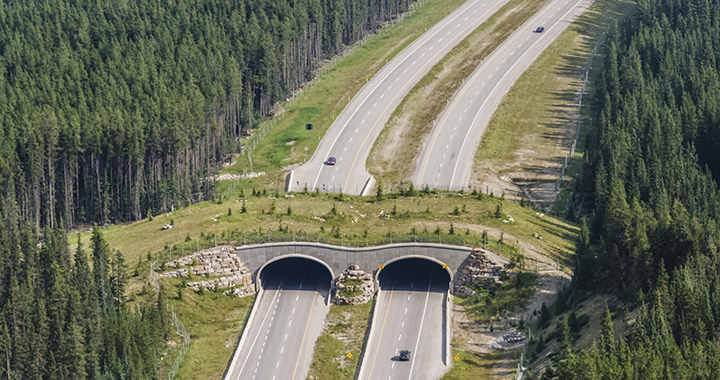Over, under, across — wildlife moving across the Yellowstone to Yukon region
Just like people, wildlife have different preferences in how they move. When it comes to wildlife crossing structures, the choices animals make depends on many factors.
Crossings built specifically for wildlife vary in size and style: they can be overpasses, underpasses, culverts or bridges. Fencing is used to guide and funnel the animals to the crossings. The choices made on crossing design also depends on the construction budget and landscape nearby.
Camera footage and monitoring have shown that some species prefer overpasses with wide open views: grizzly bears, deer, moose, and elk as example. Cougars and black bears prefer the comfort of closed-in tunnels or culverts seen in underpasses.
Monitoring also shows that different species have different preferences: grizzly bears, deer, moose, and elk like the open air of the overpasses, while cougars and black bears prefer the cozy coverage the tunnels provide. Some species even teach their young where and how to cross.
Generally, overpasses tend to be the most popular pick with most species. A study from Tony Clevenger shows just two species use overpasses more than the underpasses: black bears used both equally, and cougars tend to choose the long, low tunnels.
No matter what choice they make, wildlife crossings and fencing are there to help animals safely get across the roads that cut through their habitat. Not only does this keep them from being killed on roads after being hit by vehicles, it also keeps populations from being isolated, and keeps mates connected. This helps them breed, feed and succeed!
Here are 17 species who like to use wildlife crossings in the Yellowstone to Yukon region:
1. Black bear
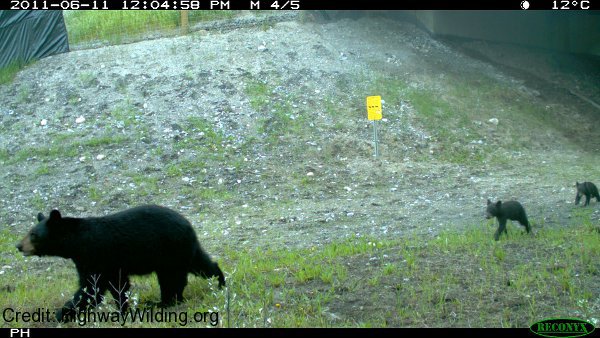
2. Wolverine
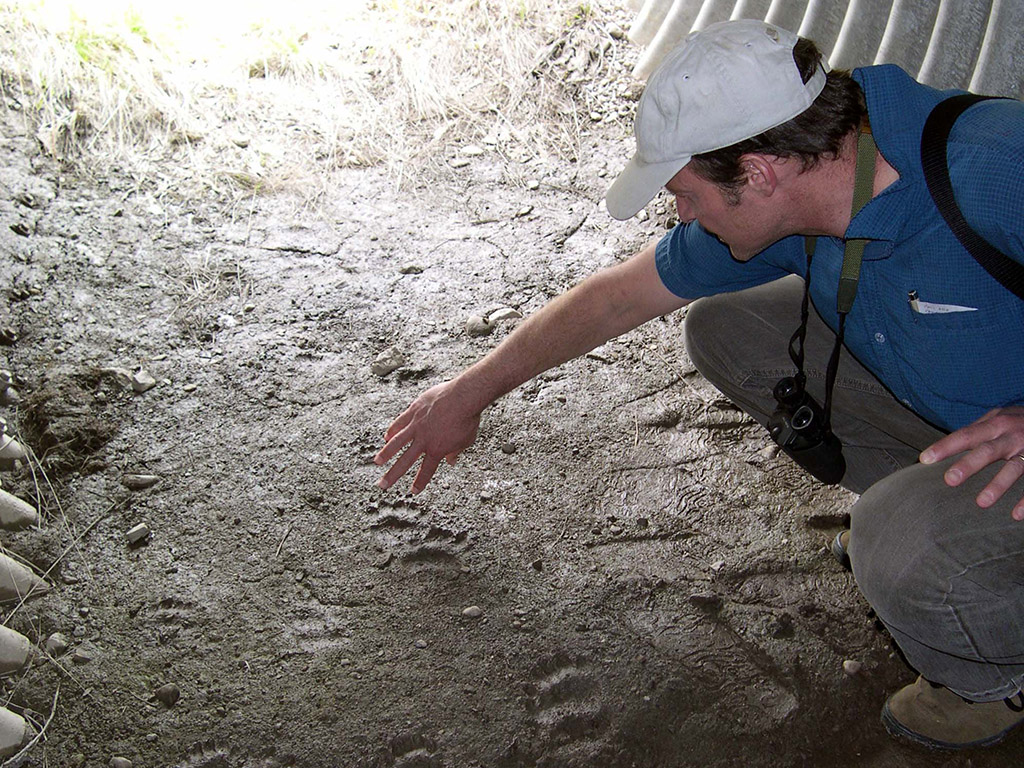
It took 15 years after Banff’s wildlife crossings opened for a wolverine to be recorded using an overpass. The secretive, highly sensitive species are rarely seen in Canada’s Mountain National Parks and while they had been photographed using underpasses, researchers were thrilled when one was caught on camera crossing over the highway in 2011.
3. Grizzly bear
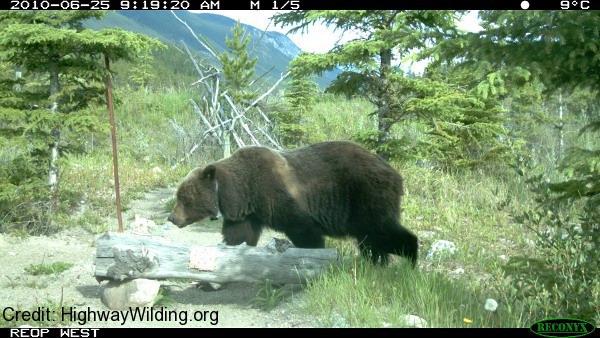
According to researchers, wary grizzly bears can take five to seven years to start using a wildlife crossing. Grizzly bear mothers have been observed teaching their cubs how to use the crossings.
4. Wolves
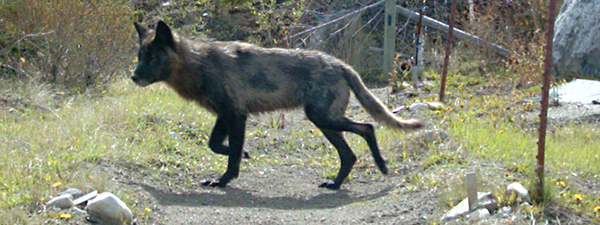
Wondering if predators, including wolves, use wildlife crossings to trap prey? The short answer is no.
A study looked at 11,000 examples of mammals using wildlife underpasses, but did not find any evidence of predators taking advantage of the crossing design to capture their dinner.
Additional evidence shows that the carnivores, including wolves, coyotes or lynx, did not follow prey into the passages. Nor do prey species appear to change their movements if predators are nearby. So it appears these crossings do not provide the easy meal they might seem to.
5. Elk
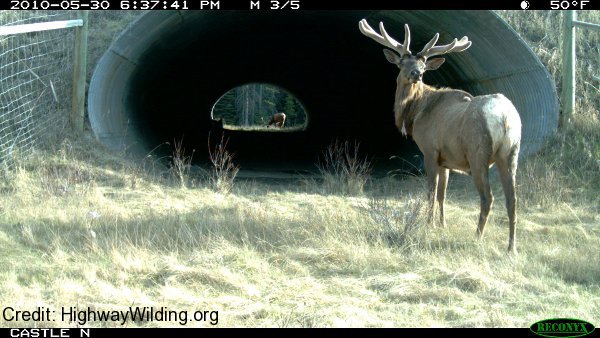
In Banff National Park, the elk were the first recorded users of the brand new overpasses when they opened. They are not as picky as some other species, and more than once have been recorded using crossings before construction was even finished!
6. Lynx
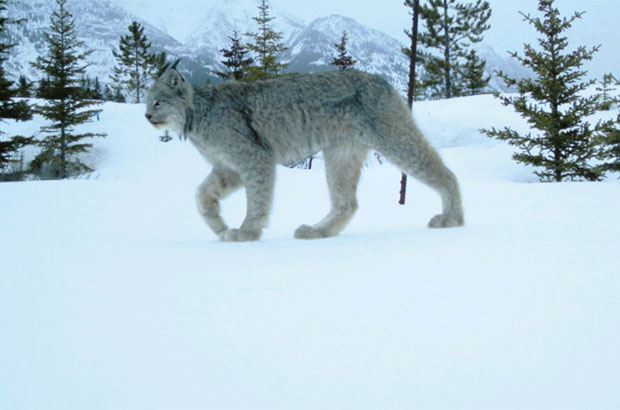
Unlike elk, lynx are a cautious species that has rarely been caught crossing on camera. This is not unusual as the animals are usually solitary and most active at night.
7. Coyotes
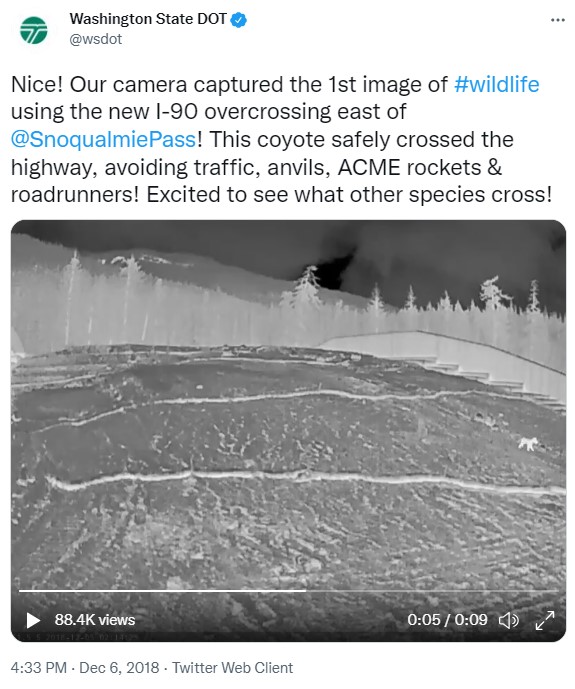
On an overpass on I-90 in Washington state connecting the North and South Cascades, a coyote was the first species caught on camera crossing the bridge — while it was still under construction!
8. Bighorn sheep
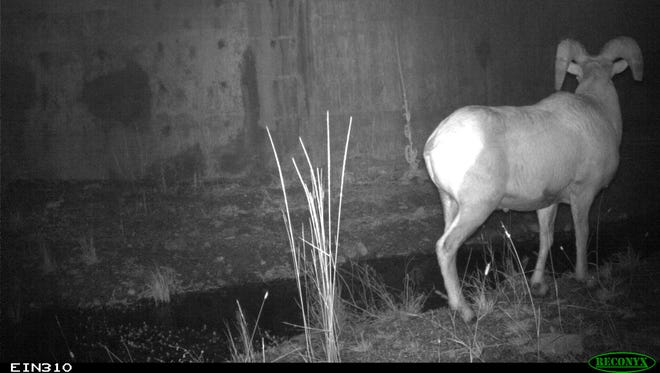
Photographic evidence shows bighorn sheep tend to prefer underpasses — like this one on Montana’s Highway 200.
9. Pronghorn
In May 2008, the Path of the Pronghorn became the first federally designated wildlife corridor in the United States. A new overpass followed, built in 2021. This route has existed for 6,000 years or more.
Pronghorn have one of the longest migration routes in the western hemisphere. This corridor helps connect two important places for the speedy mammals. Their summers are spent near the Teton Range and before winter they migrate up to 240 kilometers (150 miles) south and east, past Pinedale, WY — then back again. Along the way fences often serve as a barrier to their movements, as the mammals are not great jumpers. Two wildlife overpasses and a series of underpasses help the pronghorn on their seasonal travels.
10. Western toads
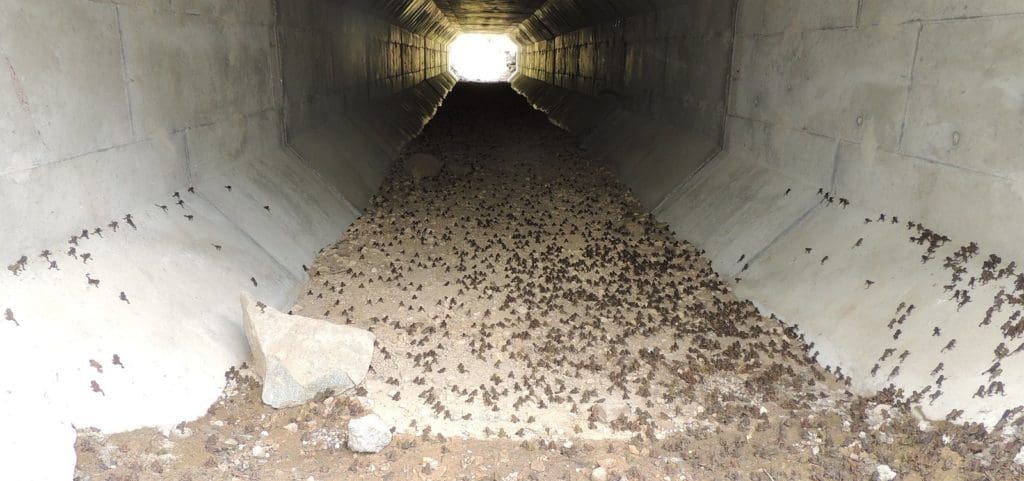
Yes, even amphibians use wildlife crossings. Twice each year, Western toads are on the move, as tiny toadlets cross from forest to lake. Toad tunnels have been constructed on Highway 6 near Nakusp, B.C., to help these little amphibians get to where they need to and thrive during their seasonal migration. The toadlets are about the size of a dime, and use specially designed tunnels (or culverts) to cross under the highway.
11. Salamanders
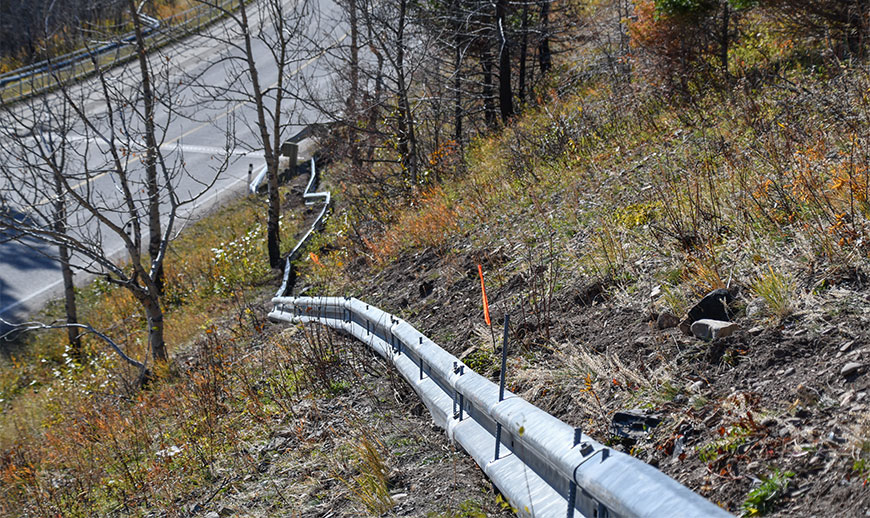
According to Parks Canada, in 1994 10 percent of long-toed salamanders (a species of special concern in Alberta) were squished by cars on roads that sliced across their breeding migration route in Waterton National Park. A tunnel system was built in this southern Alberta park and when completed in 2009 the road kill rate dropped to 0.6 percent. The culverts also help various other small species including garter snakes, shrews, voles and squirrels.
Salamanders prefer to migrate on humid, wet nights. As a result, the tunnels they use are specially designed to allow the right amount of air, moisture and light in.
12. Beavers
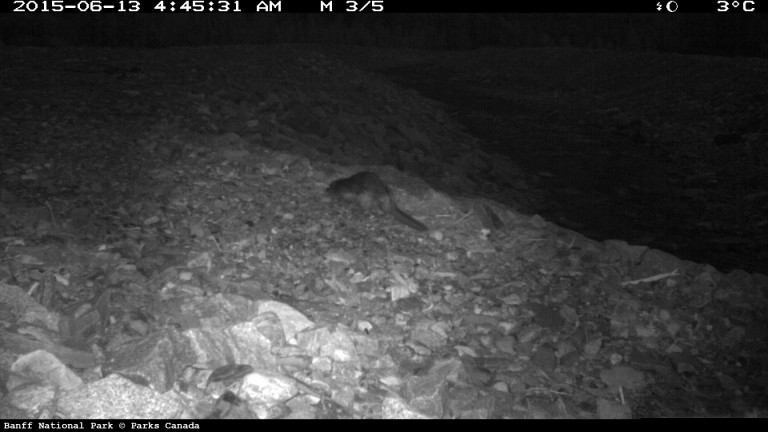
Although they don’t appear to use wildlife crossings often, hard-working beavers have been recorded using wildlife crossings in Banff, usually near a creek or waterway. This is good news, as beavers tend to be low to the ground and slow moving out of water, making them vulnerable to being struck by vehicles.
13. Foxes
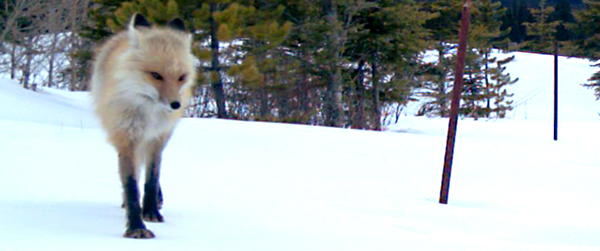
14. Mountain goats
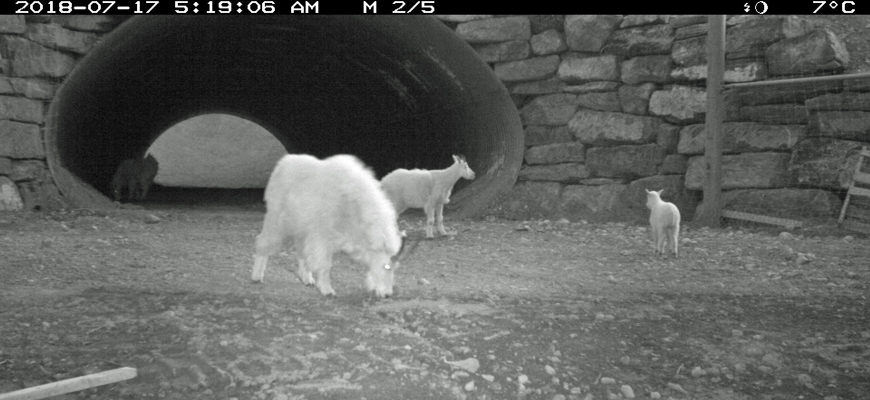
For the first time in 2018, remote cameras recorded mountain goats using a wildlife crossing structure in a Canadian national park. The goats used an underpass as well as a brand new overpass in B.C.’s Yoho National Park. This sighting is rare because the hard-to-spot species normally spends time up above the tree line in some seriously steep terrain.
15. Owl
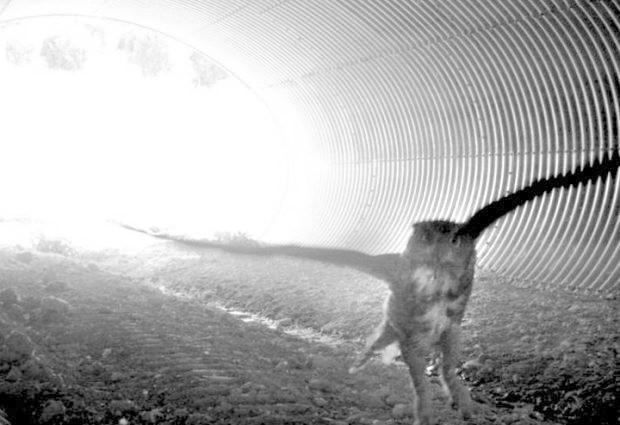
Birds in a tunnel? You bet. Although rare, this camera capture from Montana’s Highway US-93 shows even birds can use crossings and avoid getting struck by a vehicle.
16. Moose
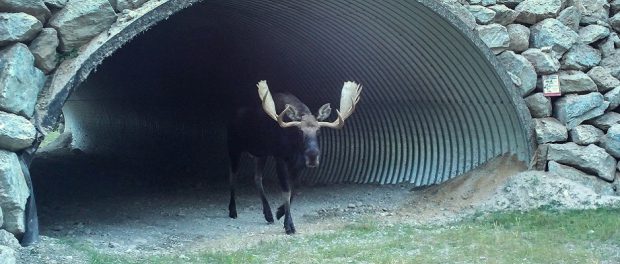
17. River otters
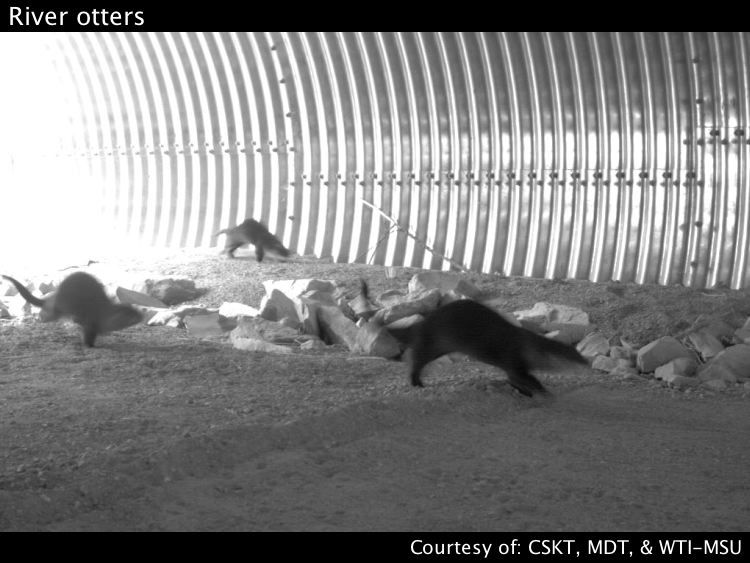
And we’re not done yet
When it comes to wildlife crossings, over or under will do the trick in helping keep everyone safe.
While there are 177 wildlife crossings in the Yellowstone to Yukon region, keeping habitat and animals connected is still a major concern. Y2Y looks for critical linkages that are either fractured or broken and fix them so animals can keep moving.
Will you consider supporting Y2Y’s work to advocate for and build more wildlife crossings?
